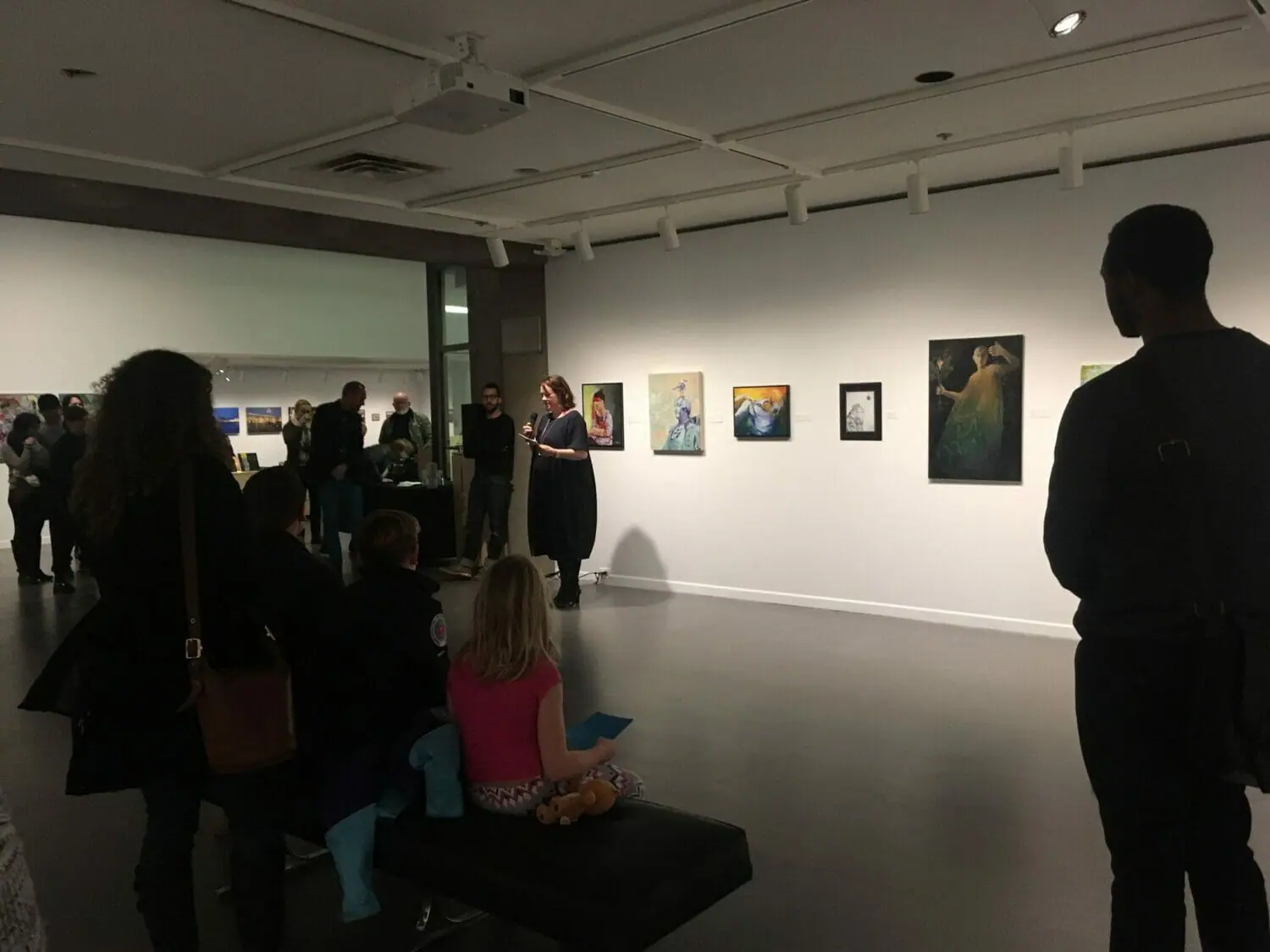The land: how humans interact with it, what it means to us and what we mean to it.
These are the themes of the current Dalhousie Art Gallery exhibit, “Marlene Creates: Places, Paths, and Pauses.”
It’s a retrospective of Creates’ (pronounced creetes) work over the past 40 years. The exhibit represents roughly 20 per cent of her total work according to Creates, but it is all her favourite pieces.
One curator of the show, Susan Gibson Garvey, describes Creates’ art as “gestures and images that deflected our attention away from the self and towards an awareness of the land and of the processes of the natural world.”
The art is Creates’ way of engaging in silent activism.
“I’m not out waving placards,” she says. “I’m just trying to do that in my own quiet way.”
Her relationship between her art and the landscape began after art school. She says she struggled for about five years, trying to do what artists were “supposed” to do. In her mind, this meant working in a studio with art supplies and creating from that.
She says she had been bringing stones into the studio and creating art with them and paper, only to return the stones to the landscape.
One day she decided to take the paper outside.
“And that changed everything,” she says. “It was like the whole landscape could become my studio.”
Creates also believes that her art started as a reaction to earthworks, an art movement that began in the late 60s. The earthworks movement consists of permanent art pieces that utilize the landscape.
Creates finds this an inappropriate form of art because it’s a disruption of the land.
“I was only young; I was only in my 20s, and those were very famous artworks, and I didn’t feel that I could publicly criticize them,” says Creates. “All I thought was, I could just do my simple little invisible gestures.”
Creates mainly photographs what is there, only adding things that can be removed.
From this starting point, Creates ventured further into many different projects all relating to the land that surrounds us.
Each project leads her to another.
Dal’s art gallery circuit composition lends itself well to Creates’ show. The retrospective is set up loosely in chronological order; when entering the space visitors are encouraged to veer left to begin Creates’ art journey.
An important piece in the exhibit to Creates is her “memory map.” It is was pencil sketch of a landscape that Creates had lived within for six years at the time of its creation.
It’s composed of 243 items: things that she remembers from being there, whether they were anecdotes or symbols.
The map is paired with a video next to it that has pictures of the places marked on the map.
Creates says that her memory map came from a different series of pieces she did in the 1980s that are also in the exhibit.
The original inspiration was memory maps that people from different areas drew for her. In the exhibit, these maps are partnered with portraits of the people who drew them and pieces of the landscape.
All of Creates’ pieces hold some sort of meaning or relation to the land.
Shannon Stride, a third-year student at the University of King’s College, describes Creates as “meticulous.”
“To notice little things or just go through tons of different ways to describe snow,” says Stride. “I think that’s just really brilliant and draws our eyes to things we wouldn’t normally see.”
The Dalhousie Art Gallery is the second stop on the show’s tour, and the exhibit will be open until May 6.
After that “Marlene Creates: Places, Paths and Pauses” will be showing at the Confederation Centre of the Arts on Prince Edward Island for the summer months.


Recent Comments